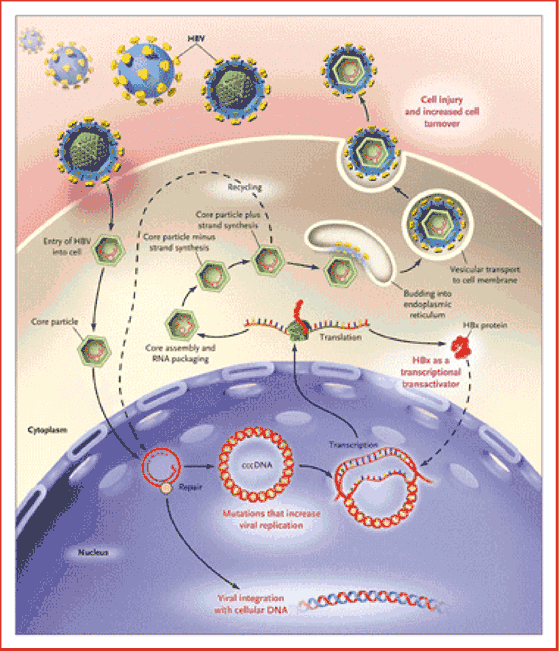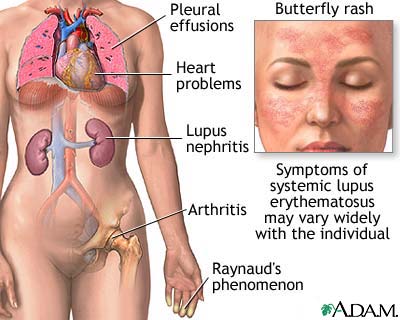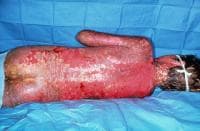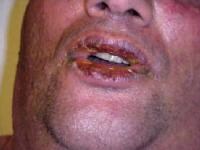
• The virus is transmitted through contact with the blood or other body fluids of an infected person - not through casual contact.
• About 2 billion people worldwide have been infected with the virus and about 350 million live with chronic infection. An estimated 600 000 persons die each year due to the acute or chronic consequences of hepatitis B.
• About 25% of adults who become chronically infected during childhood later die from liver cancer or cirrhosis (scarring of the liver) caused by the chronic infection.
• The hepatitis B virus is 50 to 100 times more infectious than HIV.
• Hepatitis B virus is an important occupational hazard for health workers.
• Hepatitis B is preventable with a safe and effective vaccine.
Hepatitis B is a potentially life-threatening liver infection caused by the hepatitis B virus. It is a major global health problem and the most serious type of viral hepatitis. It can cause chronic liver disease and puts people at high risk of death from cirrhosis of the liver and liver cancer.
Worldwide, an estimated two billion people have been infected with the hepatitis B virus (HBV), and more than 350 million have chronic (long-term) liver infections.
A vaccine against hepatitis B has been available since 1982. Hepatitis B vaccine is 95% effective in preventing HBV infection and its chronic consequences, and is the first vaccine against a major human cancer.
Symptoms
Hepatitis B virus can cause an acute illness with symptoms that last several weeks, including yellowing of the skin and eyes (jaundice), dark urine, extreme fatigue, nausea, vomiting and abdominal pain. People can take several months to a year to recover from the symptoms. HBV can also cause a chronic liver infection that can later develop into cirrhosis of the liver or liver cancer.
Who is most at risk for chronic disease?
The likelihood that an HBV infection will become chronic depends upon the age at which a person becomes infected, with young children who become infected with HBV being the most likely to develop chronic infections. About 90% of infants infected during the first year of life develop chronic infections; 30% to 50% of children infected between one to four years of age develop chronic infections. About 25% of adults who become chronically infected during childhood die from HBV-related liver cancer or cirrhosis.
About 90% of healthy adults who are infected with HBV will recover and be completely rid of the virus within six months.
Where is hepatitis B most common?
Hepatitis B is endemic in China and other parts of Asia. Most people in the region become infected with HBV during childhood. In these regions, 8% to 10% of the adult population are chronically infected. Liver cancer caused by HBV is among the first three causes of death from cancer in men, and a major cause of cancer in women. High rates of chronic infections are also found in the Amazon and the southern parts of eastern and central Europe. In the Middle East and Indian sub-continent, an estimated 2% to 5% of the general population is chronically infected. Less than 1% of the population in western Europe and North American is chronically infected.
Transmission
Hepatitis B virus is transmitted between people by contact with the blood or other body fluids (i.e. semen and vaginal fluid) of an infected person. Modes of transmission are the same for the human immunodeficiency virus (HIV), but HBV is 50 to 100 times more infectious Unlike HIV, HBV can survive outside the body for at least 7 days. During that time, the virus can still cause infection if it enters the body of a person who is not infected.
Common modes of transmission in developing countries are:
• perinatal (from mother to baby at birth)
• early childhood infections (inapparent infection through close interpersonal contact with infected household contacts)
• unsafe injections practices
• blood transfusions
• sexual contact
In many developed countries (e.g. those in western Europe and North America), patterns of transmission are different than those mentioned above. Today, the majority of infections in these countries are transmitted during young adulthood by sexual activity and injecting drug use. HBV is a major infectious occupational hazard of health workers.
HBV is not spread by contaminated food or water, and cannot be spread casually in the workplace.
The virus incubation period is 90 days on average, but can vary from about 30 to 180 days. HBV may be detected 30 to 60 days after infection and persist for widely variable periods of time.
Treatment
There is no specific treatment for acute hepatitis B. Care is aimed at maintaining comfort and adequate nutritional balance, including replacement of fluids that are lost from vomiting and diarrhoea.
Chronic hepatitis B can be treated with drugs, including interferon and anti-viral agents, which can help some patients. Treatment can cost thousands of dollars per year and is not available to most patients in developing countries.
Liver cancer is almost always fatal, and often develops in people at an age when they are most productive and have family responsibilities. In developing countries, most people with liver cancer die within months of diagnosis. In higher income countries, surgery and chemotherapy can prolong life for up to a few years in some patients.
Patients with cirrhosis are sometimes given liver transplants, with varying success.
Prevention
All infants should receive the hepatitis B vaccine: this is the mainstay of hepatitis B prevention.
The vaccine can be given as either three or four separate doses, as part of existing routine immunization schedules. In areas where mother-to-infant spread of HBV is common, the first dose of vaccine should be given as soon as possible after birth (i.e. within 24 hours).
The complete vaccine series induces protective antibody levels in more than 95% of infants, children and young adults. After age 40, protection following the primary vaccination series drops below 90%. At 60 years old, protective antibody levels are achieved in only 65 to 75% of those vaccinated. Protection lasts at least 20 years and should be lifelong.
All children and adolescents younger than 18 years old and not previously vaccinated should receive the vaccine. People in high risk groups should also be vaccinated, including:
• persons with high-risk sexual behaviour;
• partners and household contacts of HBV infected persons;
• injecting drug users;
• persons who frequently require blood or blood products;
• recipients of solid organ transplantation;
• those at occupational risk of HBV infection, including health care workers; and
• international travellers to countries with high rates of HBV.
The vaccine has an outstanding record of safety and effectiveness. Since 1982, over one billion doses of hepatitis B vaccine have been used worldwide. In many countries where 8% to 15% of children used to become chronically infected with HBV, vaccination has reduced the rate of chronic infection to less than 1% among immunized children.
As of December 2006, 164 countries vaccinate infants against hepatitis B during national immunization programmes - a major increase compared with 31 countries in 1992, the year that the World Health Assembly passed a resolution to recommend global vaccination against hepatitis B.
http://translate.google.co.id/translate?hl=id&sl=en&u=http://www.who.int/mediacentre/factsheets/fs204/en/&ei=ZXscTMDwBJGyrAfJyMimCw&sa=X&oi=translate&ct=result&resnum=4&ved=0CDEQ7gEwAw&prev=/search%3Fq%3DHBV%26hl%3Did%26sa%3DN







